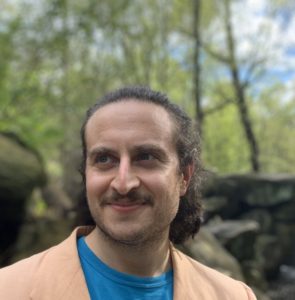
Covid-19 Forced me to Embrace Asynchronous Learning. Might this Be A Boon for Part-time Students?
After a lecture in my introductory European course about a year ago, a student who had fallen asleep in the back row remained behind. I had come to notice him: a young man who came to class early, always sat in the back row, was always prepared with the reading, and almost always fell asleep. I asked him about his torpor, which seemed incongruous with the rest of his habits as a learner. He apologized, explaining that before class he worked a night shift at his full-time job as an aide in an elder care facility.
As an educator, my hope and expectation had been for students to view my class as a top priority, imagining that my passion for history should be universal. When they don’t, I often feel offended and humbled. Exposure to the lived experience of this student, and many of his peers, has cultivated an empathy towards those students with schedules and attentions divided between their curricular duties and other aspects of their lives. The ongoing public health crisis, and the shift to online learning, has pushed me even further on this. It leads me to think differently about how we can accomodate in the classroom not only around skill level, but also around the room a student has for school in their lives.
My partner and I teach in very different institutions. Lately we’ve tried to identify commonalities and differences in what we’ve learned about how best to serve our respective students. Sarah’s focus has been on providing an emotionally responsive environment and one that embraces neurodiversity. I continue to examine how to make classrooms that enable part-time students to grow in their skills and knowledge, while minimizing the conflict between their academics and their priorities as wage earners and caretakers. We agree that these different areas of focus are a product of the very different populations that we teach.
Of the fourteen-thousand undergraduates at Lehman College, 48% are part-time students. Many part-time students have scheduling and attentional conflicts that include full-time work, childcare, and running a household. Covid-19 has increased these demands and forced educators to reimagine their classrooms so they can better meet students where they are.
This challenge presents an opportunity to improve our abilities to differentiate by career stage. Asynchronous learning allows our less traditional students to complete assignments and access material around their own schedule. Imagine modular history curricula in which student-led activities, done with teacher facilitation, bring students into contact with content that would otherwise be communicated via lecture, build skills necessary to be a strong undergraduate history student, and interact with her teacher and her peers around the major tensions and themes of the period. Take, for example, a module on 19th-century German society. I imagine our student, sitting at home, accessing a short lecture designed to orient her and then directing her to short textbook readings to glean basic information about the period. Following this, our student accesses four or five important chapters or articles on the period, curated—and if necessary scaffolded—by the professor to ensure she is exposed to multiple arguments about the period. To end the module, students prepare a short formative assessment that they bring to a single class meeting where the instructor leads a conversation about the nature of the 19th-century German middle class. Such a blended synchronous/asynchronous module would accomplish the same learning goals as a series of lectures in an introductory class and allow our student to learn on her own schedule.
In this model, the professor serves as a facilitator of learning as opposed to the source of information. But, the more independence students have, the more responsibility educators have to build skills that allow them to work independently. Schedule setting, advance preparation, and attentiveness to one’s own work habits can be taught, and they translate beyond the history classroom.
Right now, circumstance forces us to consign ourselves to distance learning and asynchronicity. But asynchronous and blended models are well suited for a community of part-time learners. I hope that we can take lessons learned during this crisis to help all of our students, no matter their status.
Leave a Reply